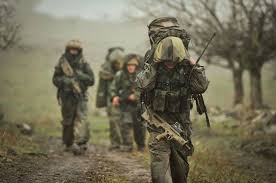 In Part 1, We defined the operational or tactical athlete as ‘an individual required to excel in multiple fitness domains simultaneously at any given time.’
In Part 1, We defined the operational or tactical athlete as ‘an individual required to excel in multiple fitness domains simultaneously at any given time.’
Within that definition tactical athletes are still a very diverse group. SEALs, Air Marshals, patrol cops, firefighters and paramedics all fall under the umbrella. All of these professions require fitness in multiple domains. Despite their differences, operational athletes have one thing in common. The need for a strong aerobic base, along with sufficient levels of maximal-strength.
Why aerobic capacity? Why maximal-strength? These are both foundational qualities. The aerobic system fuels almost ALL activity in some capacity. It powers everything you do. Secondary qualities like muscular-endurance and power are derived and expressed from maximal-strength. So while you don’t need a monster bench-press to excel in something like special operations, having high levels of maximal-strength allows for greater development of qualities like strength-endurance and work capacity. Needless to say, strength-endurance and work capacity are extremely important qualities for aspiring SOF candidates and other operational athletes.
Exactly how much the athlete needs of each foundational quality depends on the breed. A Tier 1 Operator needs considerably more aerobic endurance than a municipal paramedic. Firefighters generally require greater limit-strength than Air Marshals.
That’s one reason putting SEALs, cops, and firefighters in a one-size-fits-all group conditioning class and expecting occupational specific fitness as an outcome is unrealistic. Another reason is that a random list of exercises designed to make you sweat won’t progress important domains (like the aforementioned maximal-strength and aerobic capacity) efficiently. You’ll get tired, you might lose a little weight, but you won’t get much farther ahead in terms of actual ability over time. So if the random workout of the day approach isn’t ideal, then what? Give this a try:
Step 1 Base Building: Develop aerobic capacity + general strength
Step 2 Continuation: Add specificity
Base Building
A period of 6 to 12 weeks where the focus is placed on building aerobic capacity and strengthening connective tissue, muscles and joints in preparation for the more intense work to come. Aerobic training is purposely done in isolation for several reasons. One being that adding in things like tempo/lactate threshold work during this phase interferes with certain cardiac adaptations we want to develop. We develop these adaptations (and others) primarily through steady state endurance training.
Continuation
Think of Base Building like Basic training – it’s practically the same for everyone. But Continuation is when the real training starts. This is when you part ways with the herd and get specific. Remember, different tactical athletes prioritize different domains. Example; during this phase the soldier continues building advanced levels of endurance and strength-endurance, whereas the SWAT member might focus on maximal-strength and work capacity. During Continuation, high intensity anaerobic training, maximal-strength, work capacity, and advanced endurance enter the picture. This is all in line with the approach of aerobic capacity and strength being foundational domains. They act as ‘feeder’ attributes for things like speed, explosive power, and muscular endurance. We build the foundational domains first (the base), and then ‘convert’ them into secondary attributes with the proper transitional training unique to our goals.
There you have it, an overview of how we build operational athletes. It’s a methodical structured approach with a calculated long term progression – designed to build you from the ground up. If you’re starting to realize that furious random ‘working out’ isn’t actually doing much to improve your hard numbers, then it’s time to reassess and change things up.
